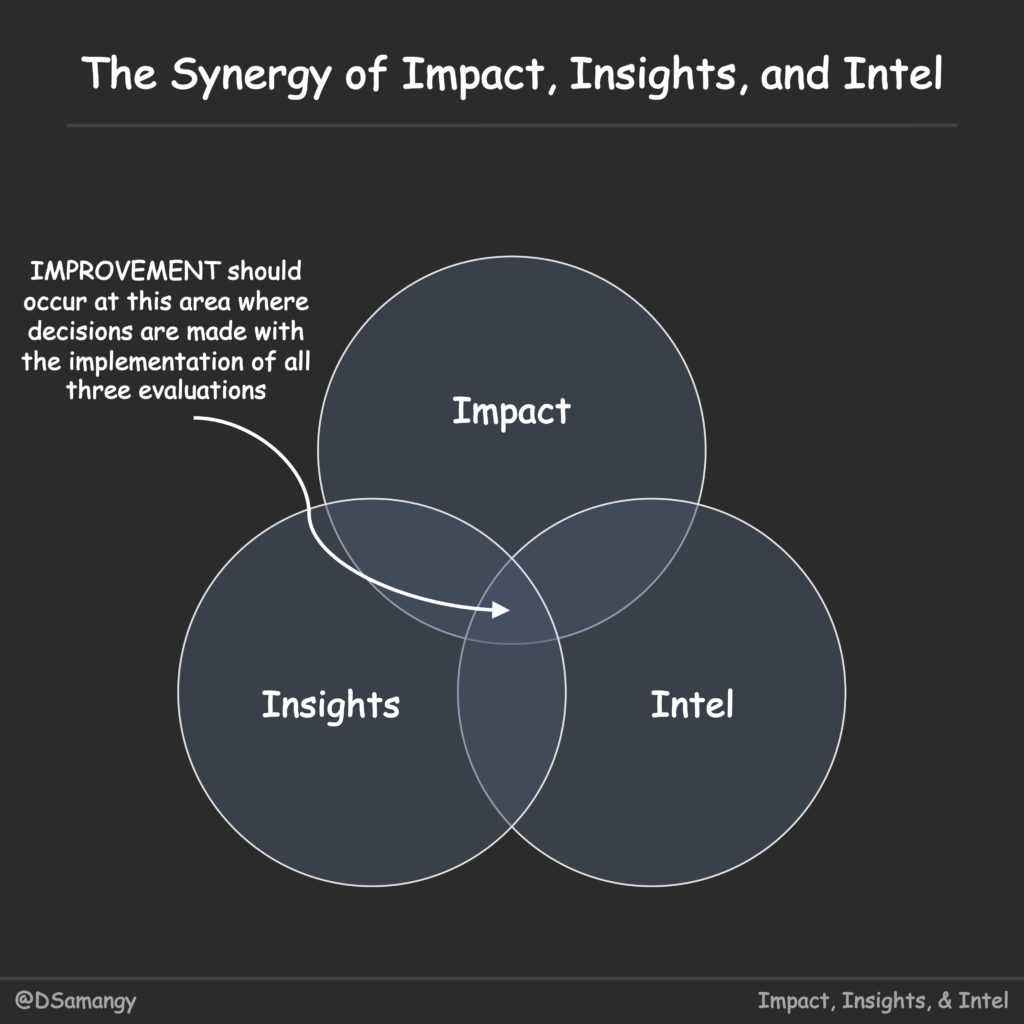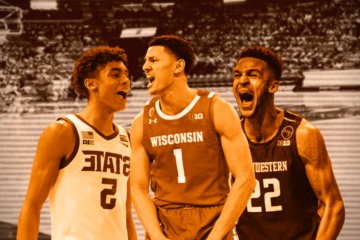As a budding analyst in all aspects of the game of basketball, I consistently look to expose myself to new forms of information from as many outlets as possible. I do this intentionally in order to challenge my own biases and prior views on whatever subject is at hand. While we all form our own underlying biases, whether intentional or not, those who acknowledge them and can learn from them, are best set up for success. This idea directly relates to the widely debated modern debacle of the “eye test vs. analytics”, which is senseless in all aspects of basketball decision-making. For as long as the game has evolved, the best teams have prioritized identifying potential new mediums of information that can optimize decisions. Just a few past examples include the implementation of rigorous weight-lifting programs, specialized player development plans, and now analytics.
Now why is there a vast public backlash when “analytics”, the most modern example of a new outlet of information, has been introduced to aid the decision making of basketball organizations at all levels? While that answer may vary significantly based on differing opinions, there is a better question at hand:
How can we incorporate all of the rapidly growing avenuesof information available into the scouting process?
In response to this loaded question, I plan to discuss and visualize my answer through a trilogy-based framework that I see best fit for modern basketball in terms of player scouting and team building decision-making. However, the goal is not to push it as the only solution to such because it is not, but to push the reader to accept the flaws of the scouting process and to question their own at the same time.
Player Impact
Impact Definition: To have a direct effect or impact on.
Basketball Application: What do we know about the player in terms of on-court performance/ability?
The time-tested “eye-test” is certainly crucial to evaluating a player’s ability and how they potentially fit in a team’s roster and timeline. This leads us to our first stage of this piece: player impact, which is an umbrella term for and assessment of on-court ability. While it is arguably the most important of the trilogy, it is imperative to understand that this form of evaluation is naturally biased to begin with and thus has its faults. Some may prefer a prospect that can shoot consistently well and is below average defensively before a prospect of the opposite mold, whether that be intentional or not. Therefore, I believe it is here where we can improve our process as a whole. We need to question our philosophies in order to assess prospects from a different lens.
Below is a recent video breakdown of mine of James Bouknight, which was made to show a quick synopsis of which skills make him an eventual 1st round pick.
Bouknight’s strengths and weaknesses are fairly consensus at this point bar a few nuanced opinions. However, these small differences in judgment are what make scouting fascinating and what could potentially alter outcomes. While these are subjective in their own right, these are just a few questions that I believe are essential to consider during the scouting process:
- Most importantly, what is a comprehensive guideline of the player’s strengths and weakness?
- What are the team’s short-term plans in terms of playing time and expectations for the role they are looking to fill?
- What are the team’s long-term plans in terms of commitment/player development?
- Adjusting for level of competition, how will the player’s skills and output translate?
- Who’s drafting and where?
In Bouknight’s case there is a pressing question to be asked that is very important in terms of long-term sustainability as an NBA player, and one that analytics can’t answer. Despite being a very good scorer, he has struggled in the catch and shoot area of his game, especially from three. So, do we believe that the shot mechanics we see on film suggest future improvement? This is a question that can’t be answered analytically and will vary case to case but is a prime example of how the eye-test can offer something that the numbers can’t. This leads us perfectly into the next segment of the trilogy, player insights.
Player Insights
Insights Definition: The capacity to gain an accurate and deep intuitive understanding of a person or thing.
Basketball Application: What do we know about the player in terms of analytical trends/projections?
The implementation of analytics in the modern game is apparent and undoubtedly is here to stay with the ever-increasing amount of data available. With proper application, this sector of analysis can be highly valuable to teams and can provide that extra advantage that each organization is striving to obtain. The application of data in basketball is commonly used to support trends in scouting reports, draft models to project player’s future impacts, and data visualization to communicate information in areas such as performance, team salaries, and sports science. While these are just a few of the countless examples of how analytics is incorporated into basketball decision-making, it shows where there is a slight advantage to be had if all areas of information are explored. While this form of evaluation is invaluable, there are certainly disadvantages in some areas. However, these can be minimized if acknowledged throughout the analysis process.

The visualization above is an example of how we can quickly visualize and communicate a player’s overview in a statistical manner. While these are great for giving us a quick overview of a player’s tendencies and potential role, they do not give a holistic view of such player functions in a team environment. A quick example in this case shows that Cade excelled in college on the defensive end in terms of box score contributions. He ranked in the 90th percentile or higher when compared to other guards in block, steal, and defensive rebounding percentage. This is useful information that can be used to identify players that potentially fit a mold in question, but the limitations must be recognized as well. This is where the supplement of impact and intel help where insights can’t. Does Cade slide his feet well? Does Cade have quick enough hips to guard quick point guards and is he strong enough to guard power forwards? Is Cade locked in and pushing himself on the less appealing defensive end? All these can’t be answered with numbers and show why the union of all three are crucial to player identification.
Although this example of Cade Cunningham, the consensus #1 overall pick in the upcoming 2021 NBA Draft is useful for this study, there are countless questions that must be asked to combat potential unnoticeable statistical biases. While there are too many to include in this short piece, a few that I find myself asking on a consistent basis are:
- What is the sample size of the statistic/metric in question?
- What did the coach ask him to do in their offensive/defensive system (shot selection, usage role, defensive assignments/philosophies, etc.)?
- What is the level of competition and how will their current output translate as a result?
Player Intel
Intel Definition: Useful information concerning a subject of interest.
Basketball Application: What do we know about the player in terms of personality/background?
The last form of the player evaluation trilogy is player intel, which one could argue is also the most important in terms of long-term development and team success. The task of roster construction isn’t just plug and play based on talents. Player personalities and cultural fits play a huge part in future performance improvements and how a team functions as a cohesive unit. Regardless of their innate basketball talent, their probability of future success may be hindered from the start if they struggle to manage their off-court responsibilities. In a recent talk with a current G League associate head coach, he said “most NBA scouts are valued more for their intel rather than scouting reports.” While player intel had always seemed important, this statement really opened my mind to just how crucial the cognitive element of team building is. By then looking at this concept through a scouting framework, a few questions of many that I immediately considered were:
- What type of work ethic does the player have, historically?
- Is he known to be coachable, and will he buy into team objectives?
- Will he embrace competition or shy away from it?
- Will he clash with teammates in a way that could negatively affect team cultural standards?
- Will he be an off-court liability?
While no person in any basketball organization is perfect, there are certainly standards to be met both on and off the court, especially in professional basketball. I would be reluctant to draft, sign, or recruit a player with notorious personal issues ahead of a lesser talented player with fewer concerns who I know will be committed to the overarching goals at hand. However, once again, like much of the information covered in this piece, this can be a subjective issue based on the opinions of the decision makers. Some executives may find an issue about a player much less concerning than others, which is a different conversation for a different day. All in all, the element of intel is fundamental to success as a scout and should always be investigated during the evaluation process.
Synergy of the Trilogy

While success is never guaranteed, the probability that the final outcomes are both effective and efficient are much higher if made when all three aforementioned forms of evaluations are implemented into the decision-making process. While there are certainly other opinions, terms, or definitions to explain this synergy of tools, there is no arguing that adding differing perspectives leads to better informed decisions. This also serves as a reminder that most of the time it is better to be the analyst with more questions than answers. In a much less serious but still highly relatable manner, Charles Darwin’s “survival of the fittest” theory is a perfect representation of this conundrum in not just basketball, but in sport. The incorporation of analytics into the already common player evaluation process is a significant advantage in today’s game and those who do not embrace it, whether that be fans, media, or teams, will be left behind.


